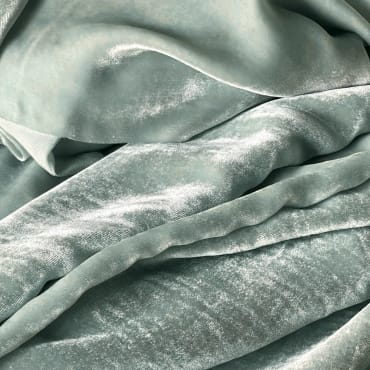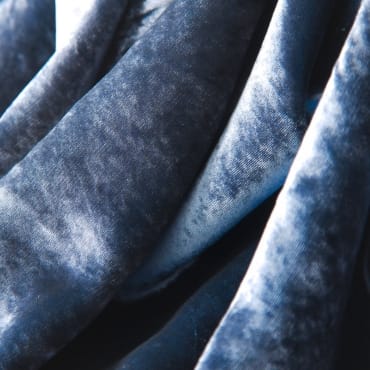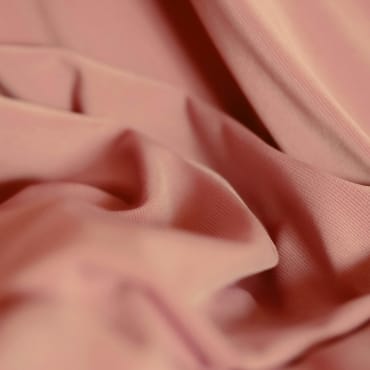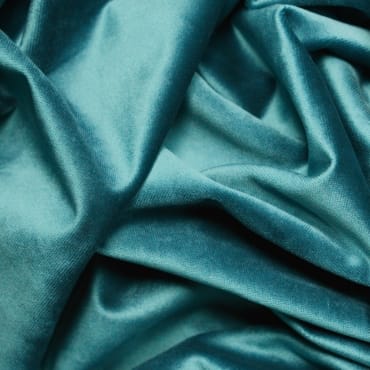Velvet feels rich, creamy, and gently warm against the skin. To the eye, it glows and seems to melt into itself. Yet most folks don t realize that velvet comes in dozens of types. Each weave creates a fresh texture, different from the one beside it. Some stretch lightly like a friendly hug. Others catch light so boldly they almost dance. Some pile is weighty; other versions float like a shy cloud. Knowing what each kind does matters when picking velvet for jackets, drapes, or weekend art. Every option carries its own charm. So, let s slide our fingers over a few favorites and let the velvet story roll out.
Table of contents
- What Is Velvet Fabric?
- Crushed Velvet: Shiny with Little Crinkles
- Stretch Velvet: Silky, Smooth, and Bendable
- Panne Velvet: Glossy and Smooth
- Silk Velvet: Luxury You Can Feel
- Plain Velvet: Basic but Brilliant
- Embossed Velvet: Texture that Dares to Stand Out
- Cotton Velvet: Soft and Strong
- Velveteen: Short and Sturdy
- Voided Velvet: Patterns with Gaps
- Rayon Velvet: Smooth and Drapey
- Polyester Velvet: Easy and Durable
- Chiffon Velvet: Light and Flowy
- Velour: Stretchy Velvets Playful Side
- Hammered Velvet: Subtle Ripples
- Lyons Velvet: Rich and Sturdy
- Two-Tier Velvet: Double-Pile Plush
- Ciselé Velvet: Shaved Patterns on Pile
- Mohair Velvet: Glossy, Tough, Timeless
- Nylon Velvet: Tough and Bright
- Conclusion
- FAQs
What Is Velvet Fabric?
Velvet fabric is a soft, cozy cloth known for its smooth surface and deep shine. Craftspeople make it by weaving two layers together and then trimming the top layer so tiny loops stand up. That gentle cut leaves the famous fuzzy hand-feel most people adore. Among all textiles, velvet types sparkle because they combine elegance with unusual touch. Velvet isn t just a pretty face-it s sturdy, warm, and surprisingly versatile. People turn to it for opulent dresses, living-room curtains, plump cushions, and dozens of other projects. Whether heavy or light, velvet sprinkles beauty and comfort into every design it meets.

Crushed Velvet: Shiny with Little Crinkles
Crushed velvet looks like someone lightly wrinkled its surface everywhere. That bumpy look appears when the cloth gets twisted and pressed. The tangle gives the outside a shimmery, uneven skin. Light hits the ridges, bounces out in all angles, and sparkles. People love this kind of velvet for party dresses and bold costumes. It drapes freely and feels cool and sleek under fingers. Crushed velvet adds instant drama and rich texture to jackets, skirts, or even cushions. Its lively glow turns ordinary pieces into a festive treat.
Stretch Velvet: Silky, Smooth, and Bendable
Stretch velvet feels plush and moves with every breath. Designers blend regular fibers with spandex or another elastic thread. That twist lets the cloth wrap closely around curves. You will spot it in hip dance sets, comfy dresses, and snug leggings. The weave stretches far yet never rips or droops. Surface texture stays even-smooth and just a bit springy. It hugs without squeezing, giving freedom to legs and arms. Because it combines softness, shine, and easy movement, stretch velvet is a dancers long-time friend.

Panne Velvet: Glossy and Smooth
Panne velvet shines like a puddle of water under streetlights. To make it, workers press the fabric flat in one single direction. That simple push gives the cloth its glossy, mirror-like surface. The finish feels slippery and almost cool to the touch. Panne is a .fabric, often seen in stage costumes or bold party wear. it stretches slightly and hangs with a casual elegance. The stuff is perfect whenever an outfit needs to shout look at me. Because it isnt very heavy, it drapes and moves without fighting the wearer.
Silk Velvet: Luxury You Can Feel
Silk velvet, on the other hand, feels like a gentle kiss on bare skin. Its fibers are soft, airy, and surprisingly light for a pile cloth. When cut on the bias, the fabric spills around the body like warm honey. Thats because real silk threads create this style of velvet. Designers claim it is one of the most opulent textiles. The surface is quiet yet beguilingly lustrous, catching light at odd angles. It glimmers without screaming, a secret luxury that only the wearer knows. Artists save it for elegant scarves, sweeping gowns, and couture jackets. Just remember, silk velvet hates rough treatment and prefers cool, careful cleaning. With love, its softness and glowing color will turn heads wherever it goes.

Plain Velvet: Basic but Brilliant
When most folks hear velvet, this no-frills version pops into their heads. Its surface is steady, without tricky patterns, stretch, or glare stealing the show. Plain velvet can saddle up to just about any job-jackets, curtains, party dresses, you name it. Slide your fingers across, and the cloth feels lavish yet light enough not to drag. Its uniform nap offers a tidy image that refuses to rumple easily. Being the simplest kind, sewists and DIY fans find it a cheerful companion. The fiber whispers softness, yet stands with the gentleness of a firm hug.
Embossed Velvet: Texture that Dares to Stand Out
Embossed velvet struts in with raised artwork that looks almost carved. Designers press these shapes in using heat and pressure, locking the design to the pile. Run your hand along the cloth, and some spots purr smooth while others tease a tiny bump. Floral swags, curling leaves, or swirling lines usually take center stage on this canvas. Because the image comes from the fabric itself, it looks dressy without the fuss of prints. Decorators use it on sofas, cushions, or evening gowns that deserve extra applause. The fabric remembers the outline, giving furniture personality and letting clothing shimmer without shaking.
Cotton Velvet: Soft and Strong
Cotton velvet is woven from soft, natural cotton fibers, so it feels warm against the skin. Its surface lacks silk’s flashy shine yet outlasts it under daily use. Because the pile sits thick, this type-velvet fabric feels cuddly and plush. Sew it into jackets, trousers, or pillows, and the cozy mood follows. Although it doesn’t stretch, the weave stays even and resilient. Colors set beautifully, so wash after wash the fabric remains bright. That mix of comfort and toughness makes cotton velvet a quiet superstar. Simple to care for, it offers the reliable luxury many people want.

Velveteen: Short and Sturdy
Velveteen shares some velvet charm while being tougher and less fancy. Crafted from pure cotton or handy blends, it feels steady in the hand. The pile-or little tufts-is clipped short, giving a firmer surface. Because the fuzz is low, this type-velvet fabric barely catches the light. It feels flat, so crafters often call it the workhorse of soft fabrics. That firmness lets it keep shape, resist wrinkles, and survive active wear. Parents love it for kids outfits because spills wash out easily. Sewists treasure its ease under the needle when making bags, curtains, or patchwork.
Voided Velvet: Patterns with Gaps
Voided velvet has clear patches where the pile vanishes. These empty spots create bold shapes and pictures. The touch flips from cuddly velvet to cool base cloth. Because of this, the fabric feels uneven in a playful way. Creators love sewing it into dresses, gowns, and chic jackets. The look gives peeking-through hints without using see-through cloth. Voided velvet adds fun texture to high-end outfits.
Rayon Velvet: Smooth and Drapey
Rayon velvet feels almost like silk but costs much less. It is buttery, sleek, and happily falls in soft folds. Designers pick this fabric for skirts, scarves, or night looks. Under lights it glimmers, yet gives off a relaxed vibe. Rayon velvet glides with the wearer and stays very light. Handle it gently, or wrinkles may appear. People choose it when easy comfort meets dressy style.

Polyester Velvet: Easy and Durable
Polyester velvet is cheap, sturdy, and super easy to clean. The pile feels silky and catches the light. The blanket-like surface lies evenly all over. This type velvet fabric keeps its color through countless washes and sunshine. Youll spot it on cocktail dresses, throw pillows, and every kind of chair. Its tougher than silk and lighter on your wallet. That softness survives tumble drying and pet claws alike. For everyday wear, its a workhorse wrapped in glamour.

Chiffon Velvet: Light and Flowy
Chiffon velvet, in contrast, is wispy, sheer, and romantic. Its a mash-up of plush velvet and delicatemosquito-net chiffon. This type velvet fabric drapes like a whisper and dances when you move. Pair it with flowing skirts or evening wraps for instant drama. The weave feels airy, almost like a cloud with tiny fibers. It turns ordinary outfits into something straight from a fairy tale. Just remember to hand wash and air dry, or the dream might unravel.
Velour: Stretchy Velvets Playful Side
Velour feels a lot like velvet, but it stretches and bounces. Because the yarns are knitted instead of woven, the fabric moves with you. This kind of velvet fabric shows up in cool tracksuits, flashy stage wear, and comfy sofas. The surface feels thick, soft, and almost cloud-like. It traps heat, flexes without ripping, and hugs the body gently. Designers love velour for pieces that need both ease and extra cozy flair. Best of all, cleaning it is a breeze, and slipping it on feels instantly warm.
Hammered Velvet: Subtle Ripples
Hammered velvet looks as if someone lightly pressed the surface. The tiny ridges catch the light, giving the fabric a gentle sparkle. This kind of velvet fabric shimmers in spots and seems to move even when you stand still. It feels soft overall, with just the slightest texture beneath your fingers. Dressmakers use hammered velvet in chic gowns or dramatic curtains. The eye-catching pattern turns an ordinary outfit into something special. With hammered velvet, even the quietest look gains an air of playful elegance.
Lyons Velvet: Rich and Sturdy
Lyons velvet feels hefty and exudes an old-world glamour. Crafted mostly from cotton, it stands stiff instead of flowing. Because of that stiffness, the fabric keeps its shape and rarely drapes. Tailors choose Lyons velvet for tailored coats, caps, or the most formal evening gowns. There is almost no stretch, and the result is a sturdy, regal look. Lyons velvet whispers history into modern style. Its long legacy proves that some textures never go out of fashion.
Two-Tier Velvet: Double-Pile Plush
Two-tier velvet mixes two heights of pile. This layer-on-layer weave gives a built-in pattern and cushions the cloth. The short bottom layer lies almost flat, and the taller top layer feels cloud-soft. Designers love this texture-rich fabric for high-end chairs and classy throw pillows. It looks gorgeous even without added prints or embroidery. Light catches the height difference and makes the surface glow.
Ciselé Velvet: Shaved Patterns on Pile
Ciselé velvet is cut in clever spots, leaving other loops intact. Where yarn is sheared, sunlit shapes-flowers, leaves, or swirls-rise from the pile. This fabric is popular for statement cushions, stylish jackets, and ornate wall panels. As you walk by, the pattern shifts with every swing of the light. No thread or paint is needed; the cloth does all the storytelling.
Mohair Velvet: Glossy, Tough, Timeless
Mohair velvet is woven from long strands of goats hair, giving it a mirror-like sheen. The weave is dense, the hand plush, and the wear resistance legendary. It excels in heavy theater drapes, plush seats, and elegant outdoor capes. Even in high-traffic settings, the surface stays smooth and upright. Mohair velvet never sags, crushes, or pills, making it a real workhorse of luxury fabrics.
Nylon Velvet: Tough and Bright
Nylon velvet feels solid and looks almost electric under the light. It barely stretches yet keeps its outline through every twist or turn. Designers grab this cloth for costumes, room accents, and stage props. Because it costs less than silk and shrugs off wrinkles faster, it never goes out of style. The surface is sleek and stiff to the touch, almost like miniature satin. That bold shine makes nylon velvet the go-to choice when color and toughness team up.
Conclusion
Now you see that velvet wears many faces, each one special. The twenty types of velvet fabric we covered prove how texture can change an objects mood. Some glimmer like wet streets, while others hug your fingers with deep, cozy pile. A few stretch like a dancers leg, yet many stay as steady as steel. Let the feel guide you to the right spot-adventure gear, elegant drapes, or everyday upholstery. Pick the piece that matches your projects voice and purpose. With every new blend, velvet keeps wowing us, offering warmth, luxury, and countless choices.
Read more what is velvet fabric
FAQs
The most popular types velvet fabric include crushed, stretch, silk, cotton, and panne velvet. Each offers a unique texture, shine, and use. Some are soft and stretchy, while others feel firm and rich.
Stretch velvet, crushed velvet, and silk velvet are great for clothing. These types velvet fabric feel soft and move well with the body. Designers use them for dresses, tops, and dancewear.
Not all types velvet fabric
are shiny. Some, like cotton velvet or velveteen, have a soft matte finish. Others, like panne or silk velvet, reflect more light and look glossier.


